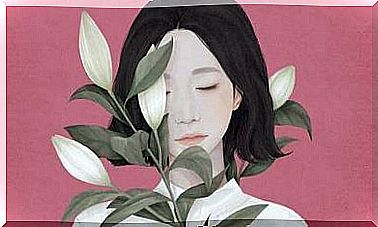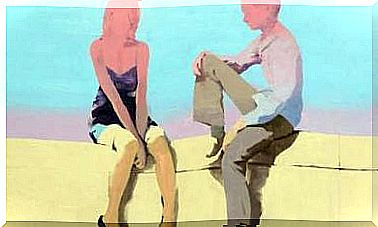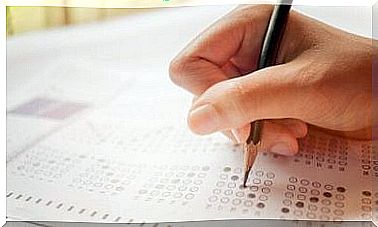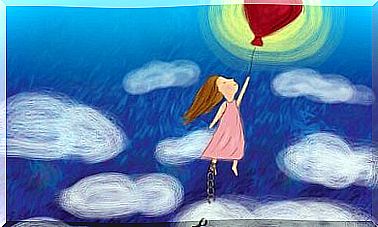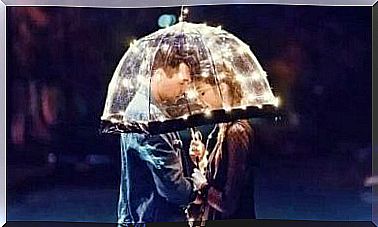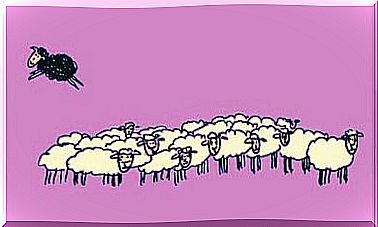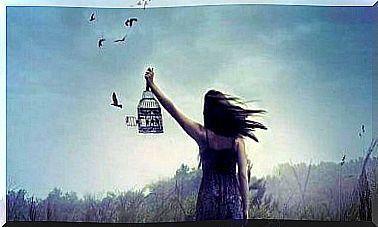Critical, Plaintive And Ruminating: Seeing The Straw In Your Eye And The Beam In That Of Another

It’s quite common for people to find it easier to complain and criticize the actions of others than their own. But what are they complaining about? Who are the targets of these criticisms? For what end (s) do they criticize?
The tendencies to criticize and complain are usually components of a totally structured inertia. It is part of a lifestyle in which we can distinguish different variants:
- Critics are a special kind of human. They have a systematic way of pointing out what is lacking to others as well as to themselves
- The plaintiffs are the first cousins of the critics. In general, they combine well and reinforce each other
- Finally, ruminants keep coming back to their thoughts, thinking and rethinking the same images or ideas. Some of them are made explicit in the form of complaints and others stay in their minds.
In general, these attitudes are symptoms which appear spontaneously and to which the person is so consubstantial and accustomed that he is not aware that such systematization has shaped a personal style.
In fact, self-fulfilling prophecies are a big part of their thinking. So many complaints cause the adoption of a negative attitude towards life which ends up building situations in which their negative ideas are confirmed.

For example, if I think and ruminate that when I pass my job interview, I will fail and the assessor thinks that I am not suitable for this position, I will enter the scene with such tension and such anxiety, being so insecure that I most likely won’t be chosen at all. And not only that, but I’ll have one more reason to complain, beyond just confirming what I originally assumed.
Moreover, if a profile of this trilogy – critical, plaintive and ruminant – is accompanied by any disorder, it will have negative consequences. His discomfort will only increase.
So if I have a flu, headache, distress, panic, eating disorder, or gastrointestinal spasms, from the simplest to the most complex, it can be a good encouragement for me to complain and so increase my discomfort.
Build scenarios to complain
The three styles – critical, plaintive and ruminant – need scenarios. It is a prototype of failed or unhealthy situations ideal for ruminating, complaining or criticizing.
In reality, many subjects of this type have difficulty in solving these scenarios. Why ? Quite simply because they lack the text to develop one of the three attitudes. They are therefore reluctant to change problematic situations. What would they do if they couldn’t criticize or complain? In this way, they perpetuate their problems to maintain their attitude.
However, there are a number of differences between plaintiffs, critics and ruminants that deserve to be taken into account for their identification:
- If the complaints and criticisms are explicit, that is, out loud, the ruminations are mental. They are rehashed in their minds. If they become explicit, they turn into complaints or criticism
- Complaints are more impersonal. If someone complains it’s usually about their own flaws. Critics, for their part, are more interactive, they are directed towards others. However, there are also those which are directed towards oneself. They are known as self-criticism. However, these three aspects focus on the negative aspects – the flaws – of the subject and others.
As can be seen, critics, plaintiffs and ruminants are generally adept at identifying flaws, no matter how small, and they have internal radar to see the straw in someone else’s eye, as the popular saying goes. Especially the critics, who don’t comply and see right through to the trunk in someone else’s eye.
An important detail concerns the tendency to envy on the part of critics. Envy is a dark and disqualifying feeling that operates through criticism, undermining any progress or achievement of the interlocutor, who is seen as an enemy to be destroyed. Yet he disguises himself as a best friend.
Critics, plaintiffs and ruminants are faced with the choice of watching a glass half full or half empty. They are very good at identifying the missing part.
Which is incredible, because having the possibility to connote life in a positive way, they take refuge in attitudes of criticism and complaint in order to highlight the things that could have been done and not those that were done. They replace admiration with envy.
However, it is not about not observing the negative or what is missing. Reporting it also allows us to refine actions, rectify errors and improve our results. In particular, it is a question of highlighting the negative by the predominance of complaint and criticism. Thus, we create a way of seeing and constructing reality that blocks change.
Complaining or criticizing blocks action
The complaint is a mechanism that blocks the possibility of developing a modification of the action. While people complain and criticize, they position themselves by looking at the problem and getting bogged down in it. In this way, they increase the initial protest and move further and further away from the path to the solution.
In addition, always marking what is missing inevitably leads to frustration. No matter what is done, we could have done more or better.
In other words, a factor associated with the complaint is inaction. Although the complainant or critic expresses their complaint mantra, regret takes the place of actions. And thus, by not leading to concrete actions which translate into solutions, a blockage is produced which favors the continuation of the complaint. Everything forms an eternal vicious circle.
As can be seen, reviews and complaints are disqualifying, which is why they are the opposite of good self-esteem. In addition, they often generate environmental repellency. No one likes to surround themselves with people who constantly point out what was not done, what is not there, what is missing or what is wrong.
On the other hand, it is true that it is very difficult to make constructive criticism. L is critical is critical, it marks what is missing and disqualified. Because not only the content of the review is important, but also the form in which it is expressed: its tone, the cadence, the expressiveness of the face, the movement of the hands and the expression of the body in general.
Together, the content and the form make a synergy of the plaintive or critical program which achieves its goal: rejection (both of oneself and of others). Although many critics use this technique to disqualify the other and place themselves in a position of superiority. All this in order not to be seen as the “bad guy” in their relationships. Indeed, in their comparisons, they always come out on top. They still feel aggrieved.

Turn reviews into demand
Many criticisms, mainly those that occur in emotional settings such as the couple or maternal or paternal affiliation, conceal orders. In other words, there is criticism, but at the heart of criticism is unexpressed demand.
If the teenage son cries out to his mother: “ You are never with me, you always take care of other things and you don’t listen to me! “. In fact, he says: “ Mom, I love you and I need you to be with me more ”. Or if the husband criticizes his wife: “ You always go to bed early and you don’t share anything with me ”, the translation would be: “ I wish you were with me more often for a while and that we could talk ”.
So when you ask, you must take into account the possibilities and resources of the other. Otherwise, your requests will fail. Just as you cannot ask a lettuce to be a watermelon, or a little dark boy to be blond and tall, requests must be based on real conditions and possibilities. Otherwise, we fall into a trap because we criticize the other while giving them impossible orders.
Finally, when he criticizes, the plaintiff-critic puts himself in a position of superiority. He always voices criticism in a position of perfection. From it, he evaluates and judges the acts of others. This angers the interlocutor.
The act of asking is different, since the two protagonists are on an equal footing. Sometimes the one who asks even places himself in a position of inferiority. When we ask, we value the other, which gives him a feeling of emotional importance. In criticism, one rather wreaks havoc, one disqualifies the other. So, better to ask than to criticize …
